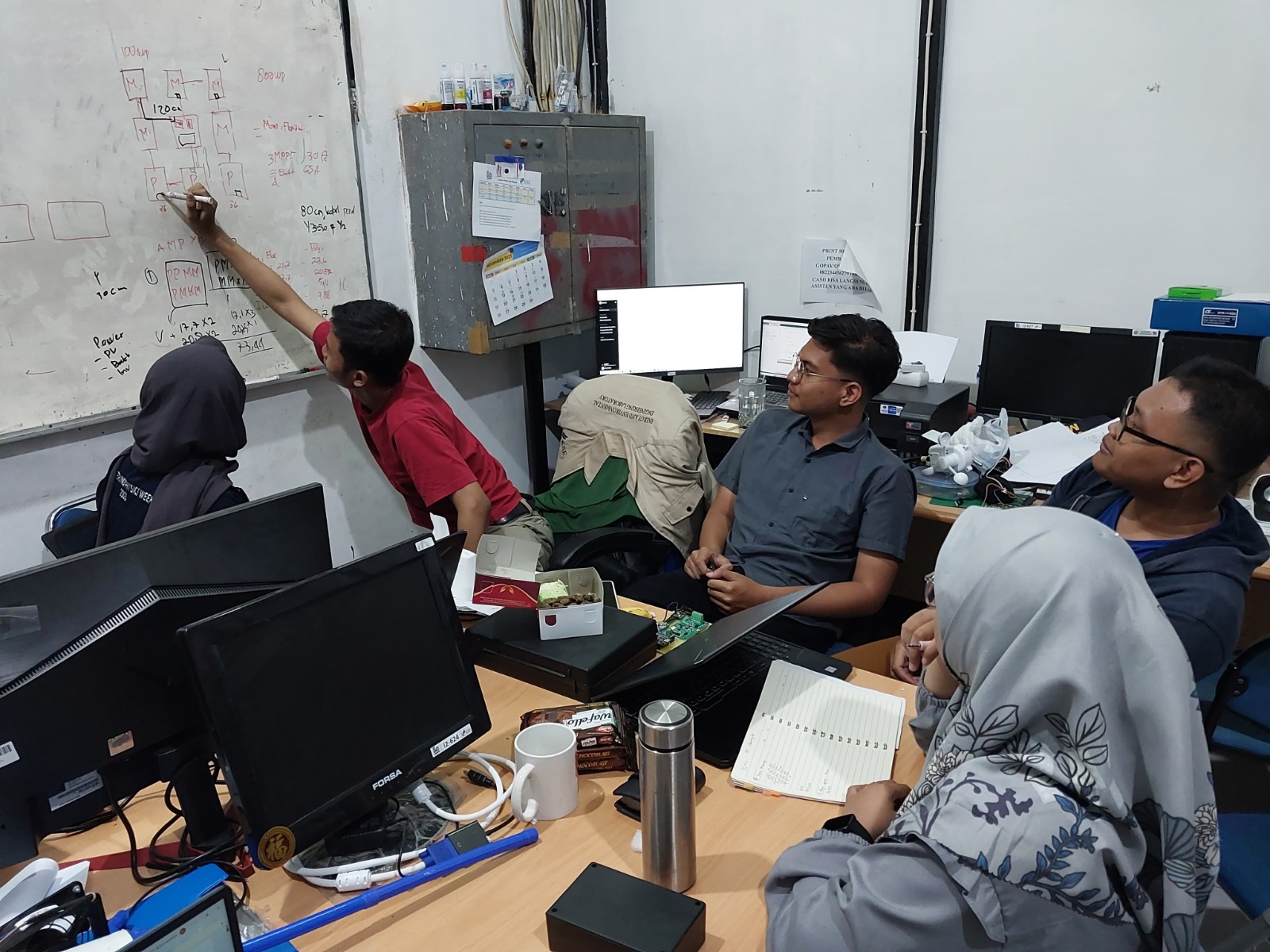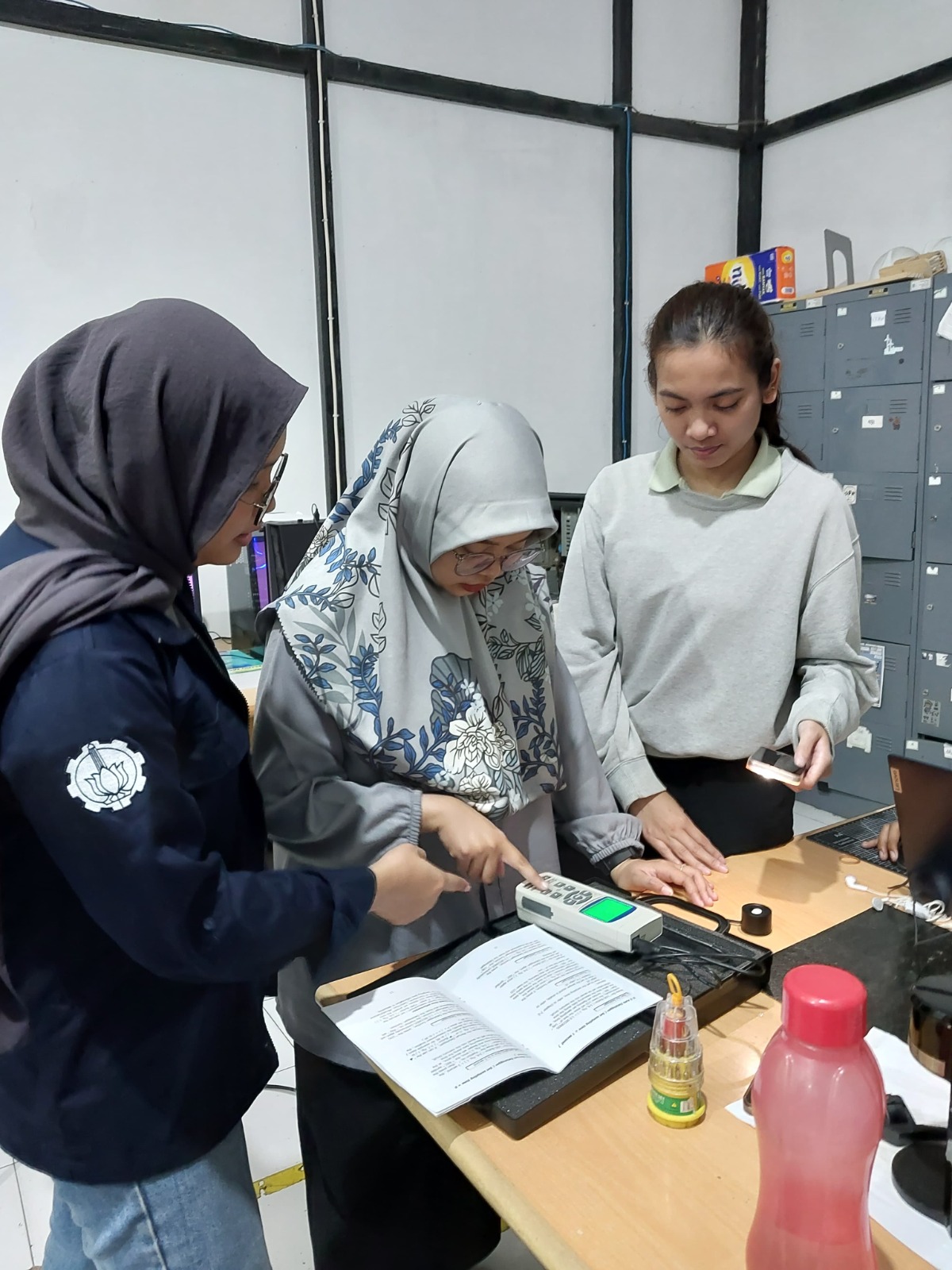
As we embark on the intricate journey of developing the FPV system and navigating the challenges of material procurement, the collaboration between the KSE ITS PV team and the technical assembly team from Orela Shipyard emerges as a cornerstone. Aligned in their commitment to designing an optimal FPV system, both teams have engaged in immersive discussions, with a particular focus on unraveling the complexities of the sensor and electrical systems of the PV. This collaborative discourse, which explores constraints, proposes innovative solutions, and facilitates the exchange of valuable recommendations, unfolded on the 11th of December 2023 at the Laboratory of Energy and Thermal Environmental Engineering, Department of Engineering Physics, ITS.
The unavailability of specific materials, notably a particular amorphous solar panel, has triggered a series of significant adjustments to the overarching FPV system design. These adjustments are multifaceted:
- Recalculating the number of installed PV types to optimize power collection.
- Changing the MPPT wiring from a central system to independent strings, providing each PV module with autonomy to maximize performance.
- Reassessing the specifications of other components to ensure they meet the overarching requirements.

IIn addition to these adaptations, the teams dedicated focused efforts to troubleshoot various issues, with a particular emphasis on resolving challenges encountered in the Solar Power Meter (SPM) and Wind Clipper data logging. Recognizing that the accuracy of the data acquisition system is pivotal for future installation planning at Gili Ketapang Island, we must ensure that the correct information was collected and further analyzed. In the meeting, troubleshooting and discussions have revealed several key insights:
- Unfeasibility of master-slave connections between microcontrollers, leading to the adoption of logging for each sensor-microcontroller package.
- Prompt identification and resolution of internal settings issues in the SPM data logging.
- Challenges persist in logging tactical wind system readings, attributed to potential data communication problems between the electrical module and the default output communication settings of the Wind Clipper manufacturer.Discussion between ITS team with Orela team at Laboratory of Environment Engineering
In essence, this comprehensive collaboration stands as a testament to the resilience and dedication of both teams in surmounting challenges, adapting to evolving circumstances, and ensuring the resounding success of the FPV system development project. As we navigate the complex terrain of renewable energy, it is the unwavering commitment and collaborative spirit of such teams that illuminate the path toward a sustainable future.

Leave a Reply